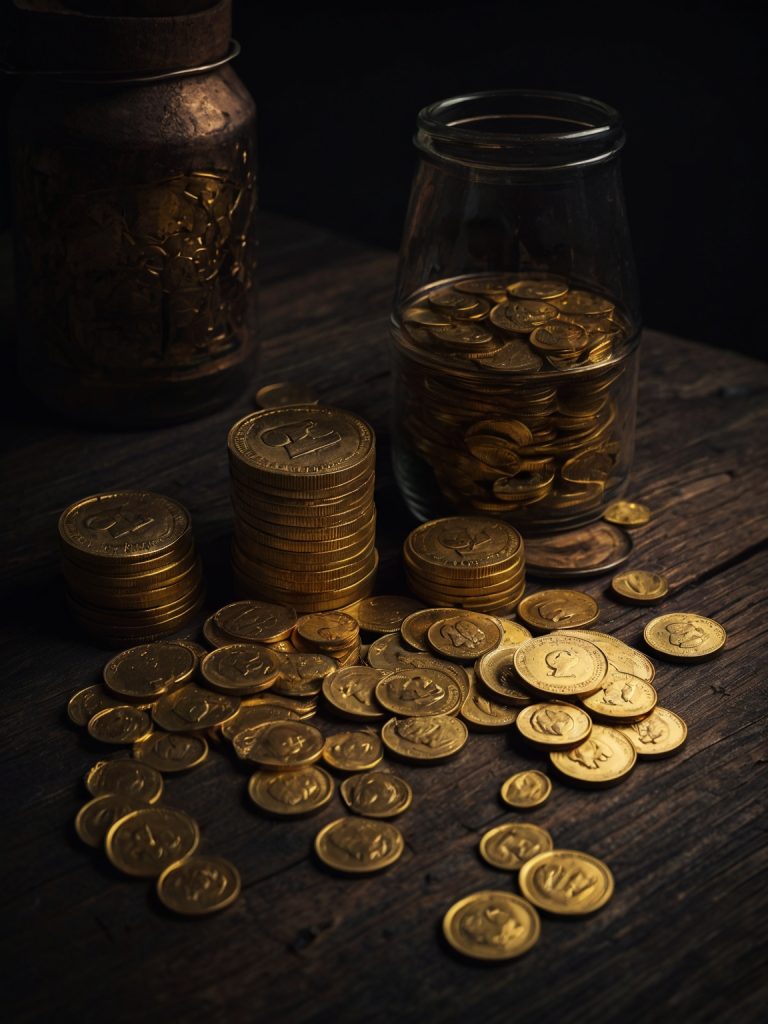This article goes beyond basic definitions, exploring the social and historical context that shapes money’s value. It provides real-world examples to illustrate the key characteristics of money and offers insights into the future of money in the digital age. You won’t find this depth of explanation and engaging presentation anywhere else!
TL;DR
- Money acts as a medium of exchange, allowing for efficient trade.
- Unlike ATP, money itself doesn’t have inherent value. Its worth comes from social agreement.
- Key characteristics of money include universal acceptance, durability, divisibility, and scarcity.
- Money has evolved throughout history, from bartering to digital payments.
- Understanding money empowers you to make informed financial decisions.

Have you ever stopped to wonder what truly makes money tick? It’s a question that’s puzzled thinkers for centuries, and while it might seem like a simple concept, the essence of money goes deeper than just coins and bills.
Your comparison to ATP (adenosine triphosphate), the energy carrier in cells, is a fascinating one! It highlights a key aspect of money: its role as a medium of exchange. Money acts as a universal unit that allows us to specialize and trade goods and services efficiently, just like ATP fuels cellular processes.
But unlike ATP, which has intrinsic value as an energy source, money itself doesn’t hold inherent usefulness. A hundred-dollar bill isn’t magically more comfortable to sleep on than a blanket. So, what makes a piece of paper or a digital number so valuable?
The answer lies in a powerful social agreement. Money works because we all collectively trust it as a reliable representation of value. It’s a standardized unit that eliminates the need for bartering – the cumbersome system of trading one good directly for another. Imagine trying to buy groceries with a hand-carved wooden spoon!
Here are some key characteristics that define money across cultures and economies:
- Universal Acceptability: Everyone within a society (or even across societies) agrees to accept this form of payment for goods and services. Think of it as a common language for valuing things. Imagine a world where every store had its own currency – a shoe store accepting only shoelaces, a bakery demanding flour! Money eliminates this chaos by providing a universally accepted medium of exchange.
- Durability and Portability: Money needs to withstand wear and tear, and be easily transported and stored. This is why gold, a historically popular form of currency, excelled in these areas. Imagine lugging around sacks of grain or cumbersome seashells to make everyday purchases! Durability and portability ensure money remains a convenient and practical tool for transactions.
- Divisibility: Money can be broken down into smaller units to facilitate precise transactions. Whether you need to buy a loaf of bread or a house, money can be easily divided to represent the exact value of the good or service. This allows for more nuanced transactions compared to bartering, where it might be difficult to offer half a cow for a single apple!
- Scarcity: For money to retain its value, it shouldn’t be too readily available. This controlled supply helps ensure its purchasing power doesn’t erode over time. Imagine a world where money could be printed at will – a loaf of bread that cost a dollar today might cost a million tomorrow! Scarcity helps maintain the stability of prices and the overall health of the economy.

Beyond the Basics: The Evolution of Money
Money’s journey throughout history reflects our ever-changing needs and technological advancements. We’ve moved from the bartering system, to precious metals like gold and silver, to paper currency, and now to digital forms of money like cryptocurrencies.
This evolution highlights another interesting aspect of money: it’s a social construct that adapts alongside our economic systems. Early societies relied on physical commodities like cattle or salt as currency. As trade expanded, precious metals became more practical due to their durability and portability. The invention of paper money allowed for easier storage and transport of large sums. And now, in the digital age, we’re witnessing the rise of cryptocurrencies, which leverage blockchain technology to create secure and decentralized forms of money.
Understanding the Essence of Money Empowers You
Grasping the core principles of money empowers you to make informed financial decisions. Whether it’s budgeting, investing, or navigating the ever-changing financial landscape, a solid understanding of money’s essence paves the way for greater control and confidence in your financial life. Imagine trying to navigate the stock market without understanding basic economic concepts! Money literacy empowers you to become an active participant in the financial system, rather than a passive observer.

Here are some key characteristics that define money across cultures and economies:
Table 1: Key Characteristics of Money
| Characteristic | Description | Example |
|---|---|---|
| Universal Acceptability | Everyone within a society (or even across societies) agrees to accept this form of payment for goods and services. | The US Dollar is widely accepted not just in the United States but also in many international transactions. |
| Durability and Portability | Money needs to withstand wear and tear, and be easily transported and stored. | In the past, gold coins were preferred due to their durability and ease of transport compared to bulkier materials like grain. |
| Divisibility | Money can be broken down into smaller units to facilitate precise transactions. | The US Dollar can be divided into cents to allow for more specific pricing. |
| Scarcity | For money to retain its value, it shouldn’t be too readily available. This controlled supply helps ensure its purchasing power doesn’t erode over time. | Central banks like the Federal Reserve manage the money supply in an economy to prevent inflation. |
Beyond the Basics: The Evolution of Money
Money’s journey throughout history reflects our ever-changing needs and technological advancements. We’ve moved from the bartering system, to precious metals like gold and silver, to paper currency, and now to digital forms of money like cryptocurrencies.
This evolution highlights another interesting aspect of money: it’s a social construct that adapts alongside our economic systems. Early societies relied on physical commodities like cattle or salt as currency. As trade expanded, precious metals became more practical due to their durability and portability. The invention of paper money allowed for easier storage and transport of large sums. And now, in the digital age, we’re witnessing the rise of cryptocurrencies, which leverage blockchain technology to create secure and decentralized forms of money.
Examples of Recent Events Highlighting the Essence of Money
- The Rise of Digital Payments: Cash usage has been steadily declining in recent years, with a surge in digital payment methods like contactless cards and mobile wallets. This trend underscores money’s ability to evolve alongside technology, maintaining its core function as a medium of exchange in a convenient and secure digital format. A 2023 study by Euromonitor International: https://www.euromonitor.com/, a leading market research provider, found that global cashless payment transactions reached 143.6 trillion in 2022, showcasing the increasing preference for digital money transfer.
- The Global Chip Shortage and Counterfeiting Concerns: The ongoing global chip shortage has highlighted the importance of durability and scarcity in physical forms of money like coins. Counterfeiting risks increase when there’s a limited supply of new coins in circulation. This emphasizes the need for robust security measures to maintain the integrity of physical currency. A 2023 report by the United States Secret Service: https://www.secretservice.gov/ revealed a rise in counterfeit coin seizures, demonstrating the challenges associated with maintaining trust in physical money during times of scarcity.
- The Rise and Volatility of Cryptocurrencies: The emergence of cryptocurrencies like Bitcoin presents a fascinating case study of money in the digital age. While cryptocurrencies offer unique advantages like decentralization and security, their high volatility highlights the ongoing debate about what constitutes a stable store of value. A 2023 article by the International Monetary Fund: https://www.imf.org/ explores the potential and pitfalls of cryptocurrencies, emphasizing the need for regulatory frameworks to address issues like price stability.
Ready to Deepen Your Financial Knowledge?
Intrigued by the world of money? There’s a wealth of resources available to help you delve deeper. Consider exploring books on financial literacy, attending workshops on topics like budgeting or investing, or even consulting a financial advisor. The more you learn about money, the more empowered you become to manage it effectively and achieve your financial goals. Whether you’re looking to save for a dream vacation, pay off debt, or plan for retirement, a strong foundation in financial knowledge will equip you with the tools you need to succeed.







